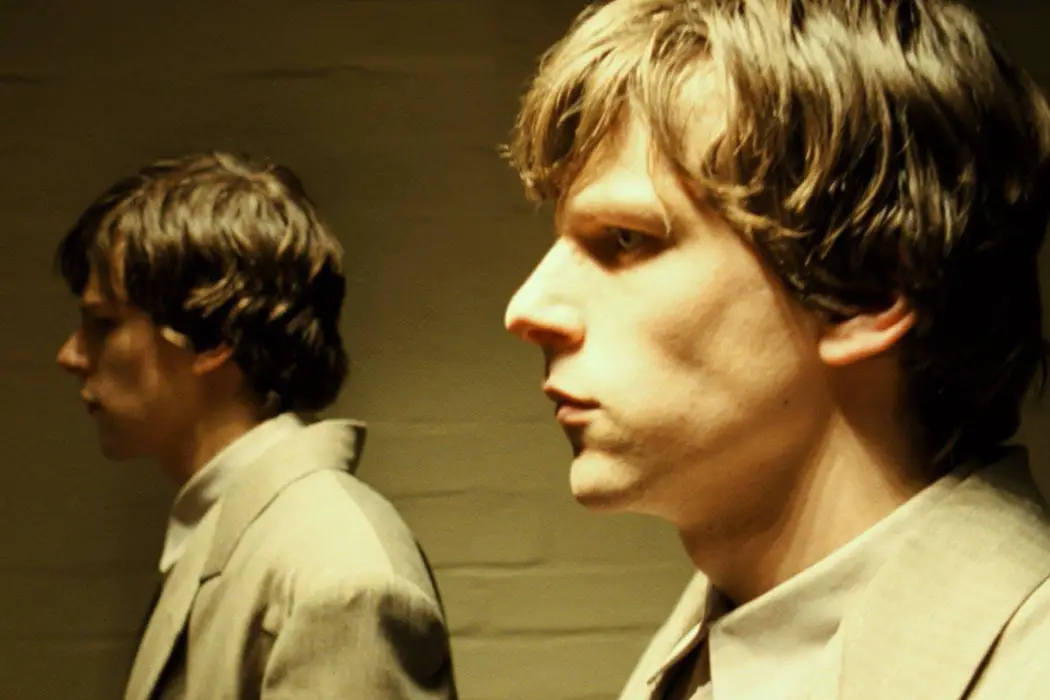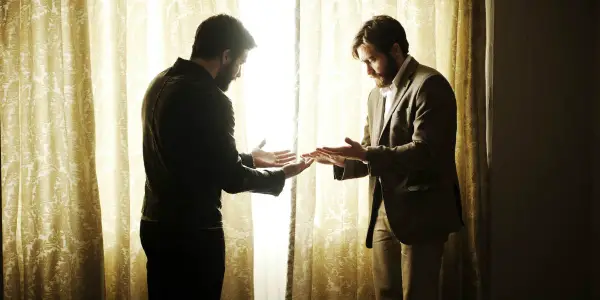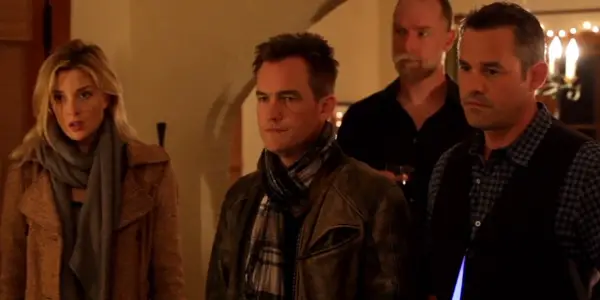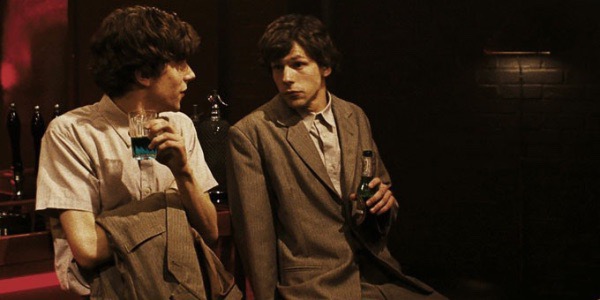The Doppelgänger: Seeing Double In Modern Movies

Liam is a freelance writer and content creator based in…
As mythology goes, we all have a doppelgänger – an exact double right down to the way we talk, walk and act. Meeting your double has long been considered a harbinger of death, or at least a bad omen. In today’s culture, things are a little different. The idea of having a double has become fun and positive, something worth savouring on our Snapchat stories and Instagram feeds. But with such mythic roots, it’s no wonder the idea has been used many times in cinema. David Lynch, Alfred Hitchc*ck and Brian De Palma are just a few directors who have championed this classic trope.
The most interesting thing about the doppelgänger is the number of different ways it has been represented. For instance, some movies present the doppelgänger (or double), not as a look-alike, but as a figure that shares some sort of connection to the protagonist.
Think of Harry Potter and Lord Voldemort, two sides of the same coin, connected through the scar on Harry’s forehead. The doppelgänger has been a staple theme in cinema for decades, but why do filmmakers keep returning to it time and time again, in every kind of story?
Double Trouble
It’s the thematic resonance of the doppelgänger that’s the most fascinating and perhaps the sole reason it continues to thrive in the world of film. It enables filmmakers to raise powerful questions about the nature of identity: Who am I? What am I? Why do I exist? It is related to all the head-spinning questions that are probably best left to the professionals to decipher.

In any case, movies draw on the idea that the double is an opposite personality. Richard Ayoade from The IT Crowd has said, “…It’s everyone’s fear that their double will be wittier, more intelligent, more charming than they are – and that they might want what you already have.” Movies have always been well-equipped to duplicate actors, either as an identical sibling (like in the Cray twins film Legend ) or as a plain old doppelgänger. And when it comes to doppelgängers, there’s always the hair-raising question: who is the real one and who is the fake?
In psycho-thriller Enemy, Jake Gyllenhaal gives a bombastic Jekyll and Hyde-style performance, in which he plays a dual role of two men who are physically identical. Adam (Gyllenhaal) discovers one night he has a doppelgänger named Anthony who has starred in a few independent movies. Both men have the same scars on their body. They look exactly the same, but personality-wise they are completely different.
Anthony is aggressive, arrogant and controlling while Adam is shy and withdrawn. When Adam decides to track Anthony down, their parallel lives begin to overlap in nightmarish ways. Enemy also explores totalitarianism, parenthood, relationships and surrealism. It is a mystery-soaked film that barely explains a single beat of its plot, but that makes it very fun to speculate about.
Coherence is a sci-fi thriller, made on a $50,000 budget and it uses the theme to explore intertwined realities and it is just as head-scratching as Enemy. But the two films really have nothing else in common. Coherence has a claustrophobic one-house setting that is used to perfection.

We’re introduced to eight friends at a dinner party who experience a string of strange events after a passing comet. Their phones crack, the lights go out, their internet connection stops working, and there’s a set of doppelgängers down the road. It’s all set over the course of one night and the group become embroiled in twisted mind-games.
The Double is another doppelgänger film that was released in 2013. It’s about an awkward office clerk that becomes increasingly unhinged after his physical double shows up one day at his workplace. Like Enemy, it deals with identity challenges but is more of a black comedy whereas Enemy and Coherence are straight thrillers.
It’s difficult to talk about these films without giving away their surprises, but ideas about selfhood seem to fuel filmmakers’ fascination with the theme. There’s just so much you can do with doubles that even many TV shows are having a field day with the trope. Fargo, for example, explores the conflict between two twin brothers, both played by Ewan McGregor.
The doppelgänger in modern culture
There is no question movies about doppelgängers make for compelling and scary cinema. In real-life, though, the idea of finding your lookalike is quite appealing for many people. There are actually agencies dedicated to helping you find your doppelgänger and websites like findmydoppelganger.net use facial recognition software to find your doppelgänger match. Thanks to the internet age, we live in a time where we create other versions of ourselves and we don’t even realise we’re doing it. Uploading that new picture of yourself on Facebook and Instagram has become second nature, but is it really you?

We’re all guilty of creating cooler versions of ourselves on social media. The internet makes it so easy to project a different, better look. Film critic Alissa Wilkinson has said, “The difference between us and the idea of the double is that in the movies, it’s always unexpected. In real-life, we’re constructing them for ourselves now. You’re facing the possibility you could lose your self to your Facebook self.”
Of course, there’s a clear line in the sand between the double in movies and how we perceive the idea in real-life, but to me, the act of creation has always been central to the doppelgänger concept. In the classic Gothic text Frankenstein, Mary Shelley uses the doppelgänger to symbolise the creature as a double of his creator Victor. Frankenstein has one of the most intricate examples of the creator/creation dynamic and it’s implied in Enemy too but in a more psychological sense.
Since the internet has made finding doppelgängers a somewhat harmless activity, does this mean a physical double is less terrifying to a modern-day audience? I think the fear is still there, but in a different way. In today’s digital world, we give away so much personal data that having your identity stolen is a real problem. It’s a nightmare that could happen to you, anytime. When considered in this context, doppelgänger movies can be even more powerful and scary than ever before.
Doppelgängers in film: Conclusion
Movies about doppelgängers and doubles present all kinds of uncanny scenarios. Handed down through folklore and myths, it’s an enduring cinematic device. There’s always been something intriguing about doubles. Maybe it’s because, above all else, we just love to see a struggle between two people. It’s going to get harder to scare audiences, but the doppelgänger still has a lot to offer.
Whether it’s a malicious twin or a supernatural being, it remains a fascinating look at one of the biggest fears of all: Ourselves!
What are your favourite doppelgänger films? Let us know in the comments below!
Does content like this matter to you?
Become a Member and support film journalism. Unlock access to all of Film Inquiry`s great articles. Join a community of like-minded readers who are passionate about cinema - get access to our private members Network, give back to independent filmmakers, and more.













